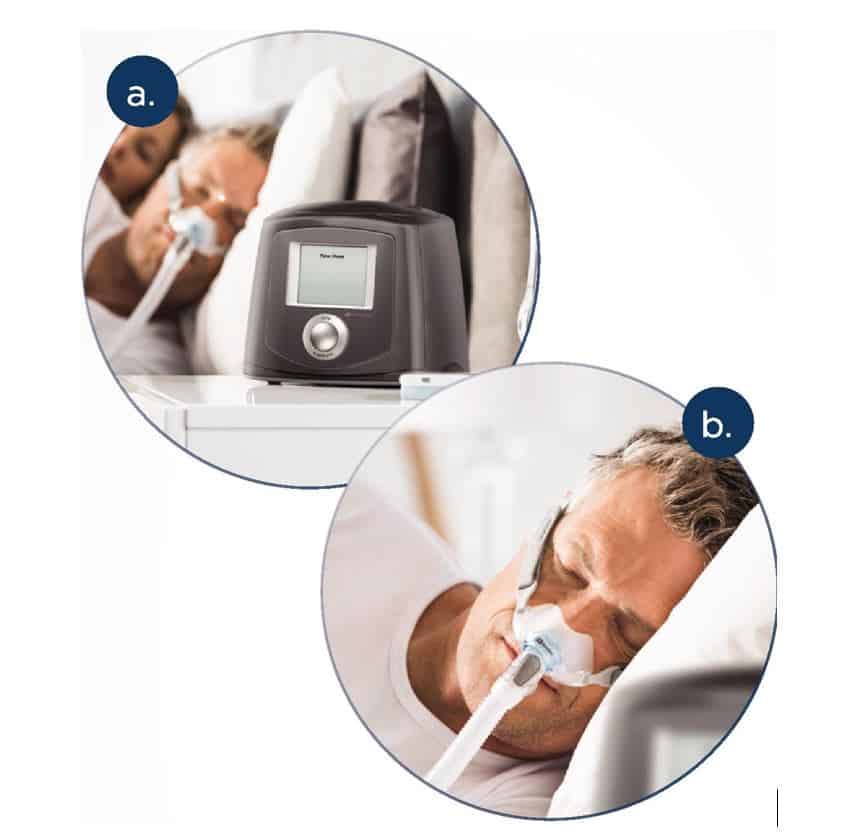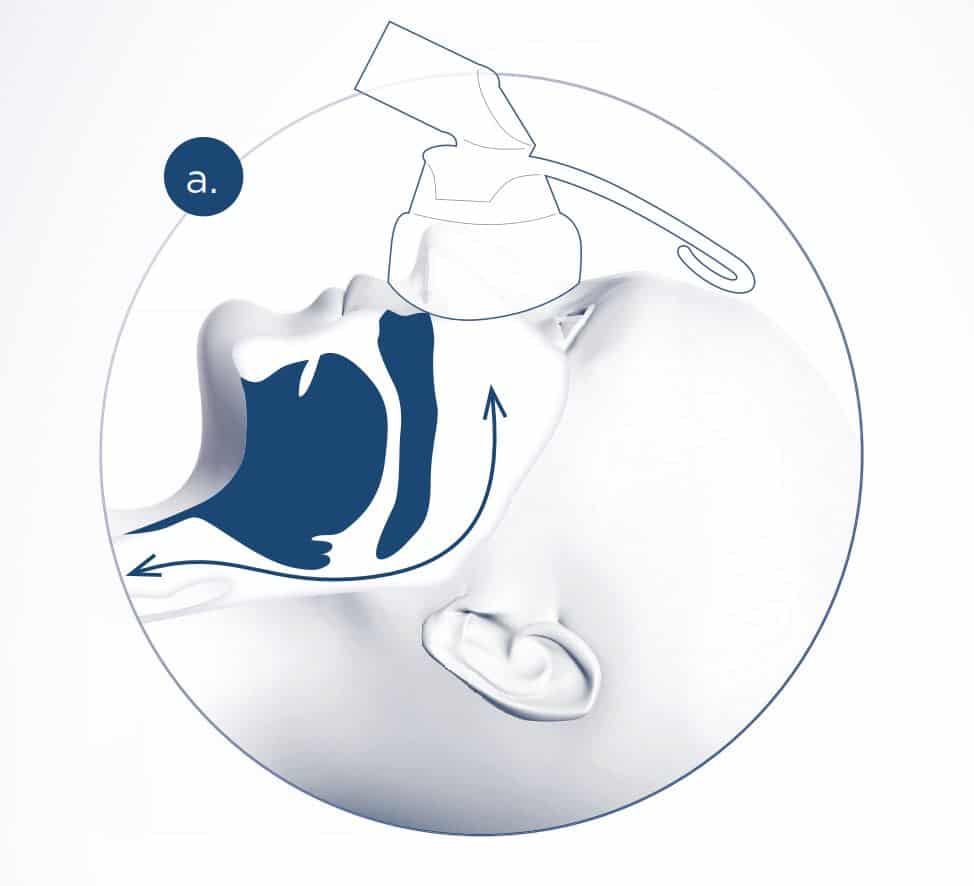What is CPAP therapy?
CPAP treatment
The air from the device (a.) is delivered through a tube and CPAP mask (b.).

CPAP is a treatment, not a cure. To experience relief from your OSA symptoms, the CPAP mask must be worn every time you sleep.
Take time to get to know your CPAP equipment in the beginning. Ask your doctor or healthcare provider questions so you familiarize yourself with all of the parts and get comfortable with how they all work.
CPAP stands for continuous positive airway pressure.
It is currently the most commonly used and most effective treatment for OSA. The American Academy of Sleep Medicine (AASM) refers to CPAP therapy as the treatment of choice and recommends CPAP therapy be offered as an option for all people with OSA.
a)- During therapy, the CPAP device takes room air in and blows it out at a pressure setting for your particular needs. Your pressure level is a prescription determined by your doctor. The constant air pressure keeps your airway open and obstruction free. This allows you to breathe uninterrupted during sleep.
How long will it take me to get used to CPAP therapy?
For some people, getting used to CPAP therapy can happen almost immediately; for others, it can take time. There is no normal length of time involved: it can vary for every user. It’s important to keep trying and stay positive. If you find therapy difficult to tolerate, try using the mask and device while awake to get used to the sensation. For some people, wearing just the mask for short periods during the day can help to get used to the sensation of having something on your face. This will not provide the treatment but can help you to adjust to wearing a mask.
When might I start to notice improvements from using CPAP therapy?
CPAP is currently the most commonly used and effective treatment for OSA; however, effectiveness can vary depending on each person. If your settings are accurate for your needs and the instructions for using the device and mask are followed, CPAP treatment should begin to decrease the severity of your OSA. For some people, improvements to symptoms may be noticed almost immediately; for others, it may take longer. Asking friends and family if they have noticed any changes that you may have not noticed yourself can also be reassuring.
To know if your CPAP treatment is treating your OSA, consult your doctor or healthcare provider. Most CPAP devices automatically provide your sleep data to your doctor or healthcare provider for them to monitor your progress and you can discuss this with them when you visit. Remember CPAP is a treatment, not a cure, so it is important to use it every time you sleep.
Fisher & Paykel Healthcare is a leading designer, manufacturer and marketer of products and systems for use in respiratory care, acute care, surgery and the treatment of obstructive sleep apnea.
F&P medical devices and technologies are designed to help patients transition to less acute care settings, help them recover quicker and assist them to avoid more acute conditions.
If a diagnosis has been confirmed, learn how to choose the right mask and CPAP equipment
Advice for caregivers, family, and friends
Your role is critical to help your loved one improve their health and get used to CPAP therapy. You can be a source of comfort and guidance along their CPAP therapy journey.
You may have experienced the following symptoms in your loved one prior to them commencing treatment:
- Loud snoring
- Daytime sleepiness
- Breathing pauses during sleep
- Morning headaches
- Lack of concentration and energy
CPAP is the most common treatment for obstructive sleep apnea. It is important that you support your loved one as much as possible while they get used to CPAP treatment.
Some helpful ways to support them:
- Educate yourself on what OSA is and why your loved one needs CPAP therapy; perhaps have a look at some online research.
- Go along to your loved one’s appointments so you can understand what they need.
- Encourage them to try and get used to CPAP therapy while they are awake.
- Help them with setting up their equipment and fitting the mask as per the User Instructions.
- Remind them to use CPAP therapy every time they go to sleep.
- Help improve their sleep behaviors and habits, such as maintaining a regular bedtime and reducing their caffeine consumption.
- It’s really important for your loved one to persevere with the therapy to start feeling the benefits, encourage them with support and positivity and let them know when you’re noticing improvements in their health and wellbeing.

